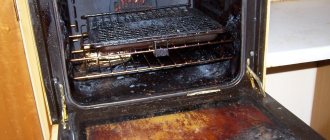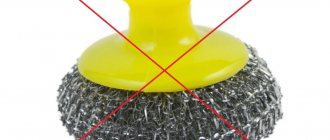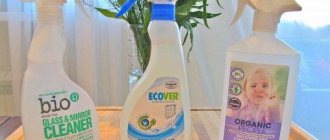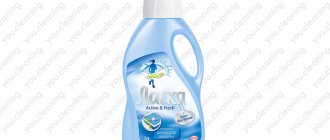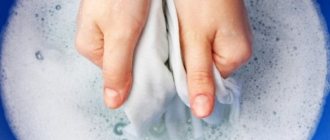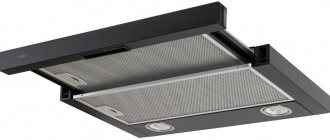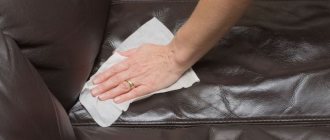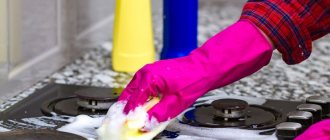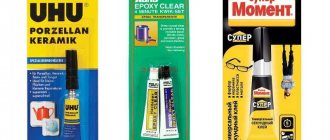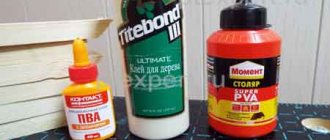Polystyrene foam is a universal material that was first produced in the middle of the 20th century and has rapidly acquired a high rate of use throughout the world. Its versatility is due to its versatility, because it is used in a variety of areas of life - from insulation material in construction to raw materials for crafts. Therefore, there is often a need to connect it to various surfaces, including each other. Today we will look at the best ways to glue this material, how to do it correctly and which product is best to use. Enjoy reading!
Solutions: how to glue foam plastic
Before wondering what is the best way to glue your foam, you first need to understand the basic criteria for your choice. Yes, polystyrene foam, as a universal and specific material, can be glued with the simplest and most popular stabilizers, but the quality and durability of this method depends on subsequent use. So, for example, if you are making a complex and large craft using polystyrene foam, or insulating an attic floor, temperature, humidity and other factors will play a big role, which can easily neutralize all your efforts and the abilities of the product you used to glue it.
What to consider when choosing an adhesive:
- Your goals regarding the subsequent use of bonded foam and its features, for example, durability;
- Loads to which the foam will be subjected;
- The temperatures it will endure;
- Room humidity.
In most cases, it is optimal to use regular PVA glue, but if we are not talking about a simple structure that has serious construction or decorative purposes, it may not be justified.
How to glue paper to foam
Good day to everyone who reads this review.
Now I'm preparing for our little daughter's birthday. Well, what would a children's party be without decorations? I prepare the decorations with my own hands. Therefore, I have already used several bottles of PVA glue.
More than others, I liked the universal PVA glue from the Prof Press brand.
I cover the foam blank with flowers from napkins. So this glue is very suitable for this.
Water does not separate from the glue, as sometimes happens, and there are no lumps in it. The glue is moderately thick, absolutely white. It dries quite quickly. I don’t hold each flower for a long time; they stick with this glue almost immediately, even when it has not yet dried.
There are precautions on the packaging.
But if you use glue exclusively for its intended purpose, then it is completely safe.
This glue can be used to glue together almost any materials and surfaces.
I also liked the comfortable “spout” here. It makes it very convenient to squeeze out glue.
Well, I’ll show you what I came up with using this glue, foam plastic, napkins, scissors, a stapler and my own hands.
I can recommend this glue for purchase. I myself will buy it again if necessary. Such a bottle, with a volume of 125 milliliters, costs only 33 rubles.
Thank you for your attention to my review and happy shopping.
Foam plastic has been used for a very long time as the main material for sound and thermal insulation of premises. The popularity of the material is due to its many positive qualities, the most important of which are low cost, moisture resistance, and low weight of the tiles. But if this is your first time working with this material, then certain difficulties may arise when attaching it to the wall or ceiling. Today, a huge number of products are produced that are ideal for interior and exterior work. In the article we will describe the main types of adhesives, and also tell you how to properly glue polystyrene foam.
Polystyrene foam is able to retain all its positive qualities for 25 years when finishing external walls. If you are going to glue foam plastic to the wall indoors, then it will serve you without losing its performance properties for 50 years. The material copes well with temperature changes, protects the building from mechanical damage and ultraviolet light, does not get wet and has excellent fire resistance. It is for this reason that it is used as an insulating material in almost all rooms, including children's rooms.
Foam is suitable for almost any surface, but it is important to stick it correctly
One of the main tasks when decorating walls with polystyrene foam is its proper gluing. A distinctive feature is that the material is suitable for almost any surface, be it wood, concrete, brick wall, even metal. When working with metal, certain difficulties may arise, especially if the adhesive solution contains gasoline, acetone or other solvents. The problem is that these solvents can cause the polymer board to deteriorate.
Another important feature is that you cannot skimp on the adhesive composition. It is necessary to apply glue in at least five places - in each corner, as well as in the middle. However, many treat this recommendation irresponsibly, applying glue to only three or even fewer points. As a result, after a very short period of time, the slabs move away from the surface, which leads to a loss of the insulating properties of the material.
The surface to which the material will adhere is also of great importance. It should be pre-prepared and cleaned of paint, dirt or rust. A sanding machine is ideal for these purposes, but if you don’t have one, you can use regular sandpaper. After sanding, you will need to treat the surface with a special degreaser, which will ensure maximum adhesion and high drying speed.
Before gluing the foam, you should decide on the choice of adhesive composition. There are three main groups of means for attaching to the wall:
- 1. Adhesives
- 2. Plaster mixtures
- 3. Dowels
Let's say a few words about dowels. Fastening is carried out by screwing them into the wall at five points - in the corners and in the center. However, to achieve maximum effect, it is recommended to use some kind of glue so that the material adheres as firmly as possible to the wall surface. This is especially true for outdoor work, where maintaining insulating qualities is of paramount importance. But even if insulation is carried out inside buildings, glue will not be superfluous here, since it should saturate the joints of the slabs.
The installation process is very simple. First of all, the lower row of slabs is installed, after which the installation of the upper rows begins, moving from bottom to top along the entire perimeter of the wall. An important rule is that between two glued foam boards you must leave a small gap of about 3 mm. This is a general rule that applies not only to working with dowels, but also to glue. The creation of the gap is due to the fact that foam tends to contract and expand with certain temperature changes.
Tips: how to glue foam plastic together
You can glue foam plastic using a wide variety of methods and materials. Many of them can be purchased at regular office supply stores, which can be used to process and connect simple designs.
But if you need serious fixation for a long time, your path lies in special construction stores, where you will need to carefully analyze the entire product range and choose the adhesive that suits your intentions.
The most common and simplest way to create a full-fledged fixation is glue of various strengths and purposes, although people can sometimes use other means, such as polyurethane foam.
Foam gluing can be done using the following tools:
- Regular PVA Glue - for simple structures and crafts, with characteristic short-lived operation.
- Special glue for foam plastic for gluing together. You can find one in special construction stores at a fairly low cost under the Styroglue configuration, but it is quite rare on the shelves, which makes it difficult to purchase.
- When insulating beam structures, it is quite possible to use polyurethane foam, but you need to take into account all the individual characteristics of operation.
- Hot glue. It must be used with extreme caution and only with the help of a special glue gun.
- Spray adhesive that can be used to glue both different materials together and foam elements.
Of course, this is not the entire list of possible means for gluing, because in the commercial aisle you can often find special adhesives for gluing foam plastic to other surfaces - wood, metal, and so on. But for the purpose of gluing together they are absolutely not suitable.
How to glue foam to other materials?
*
Some types of glue designed to hold sheets of insulation together are not suitable for other materials. Therefore, when choosing a composition, it is necessary to take into account the characteristics of the surfaces to which the insulation sheets will be attached.
- Concrete. When insulating the walls of a house under siding, foam plastic is attached directly to the concrete. The most universal adhesive option for such insulation is polyurethane foam or PVA.
- Metal. Liquid nails, polyurethane glue, and PVA are suitable for attaching polystyrene foam to metal. Also, a good result will be when using double-sided tape if the area to be pasted is small.
PVA glue
- Textile. For gluing fabric surfaces, aerosol or universal glue and liquid nails are usually used.
- Glass. The best option for bonding polystyrene foam to glass would be epoxy, universal or spray adhesive.
Adhesive spray
- Paper. To increase the thermal insulation of a room, the walls of the house are often insulated from the inside, after which cosmetic repairs are carried out. It is important to remember that you cannot glue wallpaper over polystyrene foam. It is necessary to cover the insulation with plasterboard. And for wallpaper, regular wallpaper adhesive is suitable.
- Tree. To glue insulation to wooden surfaces or plywood, instant or polyurethane glue and liquid nails are used.
What kind of glue to glue foam plastic together?
So, let’s determine a specific list of the most suitable adhesives for processing and joining polystyrene foam. Of course, they will be specialized substances for such a specific material as polystyrene foam, or its closest relatives - extruded polystyrene foam, which is also quite common in household use.
The main qualities and features of the special Styroglue for working with polystyrene foam:
- It is produced taking into account all the features of the non-standard constitution of the foam - its porosity and foam-like properties.
- The best option would be to use spray adhesive, because it penetrates even better into the complex structure of the foam and forms a kind of sticky film. But here we can highlight a feature - the mandatory use of gloves, because it easily gets on everything that is nearby and is not easy to wash.
- It is more durable and dries faster than many other adhesives when used as intended.
It is quite appropriate to use glue aerosols or guns, but when using them there are several features that are extremely important to take into account in order not to harm the structure of the foam (more details below).
Glue in a bag
Before purchasing dry construction adhesive mixtures, be sure to make sure that they can stick foam plastic.
Brought into working condition by mixing with water, they are used both for gluing foam plastic to the wall and for gluing slabs together. Some mixtures are also used to create a reinforcing layer over insulation using fiberglass mesh.
To prepare the mixture, use a heavy-mix mixer and a low-speed drill. The amount of water used for preparation is indicated on the packaging. It is better to apply glue to the foam with a flat spatula and then level the layer with a comb.
Filling the seams between the slabs with an adhesive mixture when laying foam plastic on the wall allows you to firmly glue the slabs together. The resulting connections are airtight, durable, frost-resistant, and resistant to moisture.
How to glue foam plastic correctly
The basic instructions for gluing foam plastic are simple, and the results often do not take long to arrive. However, there are some peculiarities that depend on your goals, the specifics of the glue and the raw materials themselves.
Instructions for gluing foam plastic:
- Prepare everything you need for work - gluing material, glue, preferably rubber gloves. If the work takes place with large structures, use small weights to press and better fix the raw materials.
- Depending on the glue used, apply it with a brush (if we are talking about ordinary liquid glue), with a gun in several stripes, or spray it on the surface. If the goal is not a strong and clear fixation, you can apply it pointwise, along the edges and several points in the center.
- Attach the polystyrene foam (expanded polystyrene) to each other and, if the situation requires it, press it with weights. Leave everything for the time determined by the glue and the size of the material (From 20 minutes to several hours).
- Use the result for its intended purpose, removing weights and checking the quality of the work done.
Features are the use of specific tools and methods. For example, some adhesives foam when they are left on foam or polystyrene foam for a long time - to do this, you will have to remove the residue from time to time with a sponge or rag.
There are also rules for gluing large or slightly damaged areas - before the procedure, they must be thoroughly cleaned of dust and, if possible, treated with sandpaper to make the surface smoother, less porous and thereby increase the level of stabilization and fixation.
It is important to monitor the temperature level when using hot glue. If the temperature is too high, the glue easily corrodes the entire surface, making subsequent gluing almost impossible.
Features of applying adhesive mass
To work, you need to know the features of polystyrene foam and how to glue it to other surfaces. You also need to adhere to a clear sequence. So, application consists of the following steps:
- Surface preparation and cleaning . Working with foam is very easy if you choose the right glue. All that is necessary for this is to apply the composition to the foam element and press it to the required plane. Then you need to wait until the glue dries. But before gluing, you need to remove particles of dirt and dust from the surface using a dry cloth. Gluing to a contaminated base will negatively affect the adhesive ability, which will significantly weaken the fixation.
- Applying the adhesive mixture. For maximum effective fixation, an even and thin layer should be applied to the surface. If there is no need for strong fixation, then the glue can be applied in strips or drops. If you have a very large foam part, you can pour glue directly into the groove or treat the surface with a brush.
- Installation of material . It must be pressed carefully but firmly so that the composition can come into contact with the surface being treated. This will give you about one to two minutes to adjust the position of the foam.
- Drying. After that, you just have to wait for the glue to dry. Depending on the dimensions of the surface, the type of adhesive solution and its volume, complete drying time varies from five to ten minutes to three to five hours. During this period, you should not touch the surface, otherwise the procedure will have to be repeated.
Expanded polystyrene is very easy to glue, and almost any adhesive is suitable for this job. In addition, it is extremely lightweight and does not cause any problems during installation and operation.
Gluing wallpaper to foam plastic
If the requirements for the texture of the coating are not very high, wallpaper can be glued to this material in the same way as on a concrete coating, using wallpaper glue. To improve properties, PVA is added. This is a cheap and accessible option.
When applying a sticker using another method, you need to carry out preparatory work. To do this, you need to apply putty to the foam plastic using the same glue that was used to install the sheets. To make the putty layer more durable, you can use a reinforcing mesh. After drying, you need to grout using sandpaper and remove any unevenness.
Next, you need to apply a primer, and after it dries, stick a backing (for example, newspaper) on the wall, and then move on to the wallpaper. The quality of gluing will be much better than in the first method.
Knowing how to attach foam to concrete, metal or each other, what glue is best to use, will allow you to obtain high-quality and strong adhesion of the material. Following the instructions will make the process easier .
Bonding foam to foam:
It is important how to glue the foam to the foam . To do this you can use:
liquid foam;- concrete contact anhydrous mixtures;
- liquid nails;
- silicone sealants;
- special glue-foam;
- compositions for tiles.
Liquid foam is an adhesive substance that is created when there is no glue in the house. Can be used in case of sudden crack formation in the roofing material. The product must be dissolved and thereby obtain glue .
